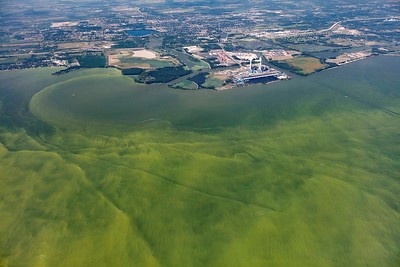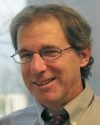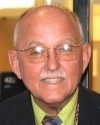Partnerships for Environmental Public Health (PEPH)
February 25, 2020

Harmful algal bloom on Lake Erie.
(Photo courtesy of NOAA Great Lakes Environmental Research Laboratory)
The NIEHS and the National Science Foundation have created the Oceans and Human Health (OHH) program, which emphasizes research on harmful algal blooms (HABs), infectious microbes (Vibrio bacteria), and contaminants of emerging concern such as microplastics. To foster community involvement and participation, each of the four OHH Centers has a Community Engagement Core that works with Center researchers to communicate research findings more effectively and to engage community groups, resource managers, other stakeholders, and the public. This webinar discussed several ongoing citizen science programs at the Great Lakes and South Carolina Centers that involve community members as learners and practitioners of OHH research. Dr. George Bullerjahn discussed partnerships established with local stakeholders in the Great Lakes region to collect data and track the spread and intensity of algal blooms. This citizen science program engages charter boat captains in Lake Erie, as well as U.S. Coast Guard personnel, in the collection of water samples to provide real-time data on the prevalence of freshwater HABs. Drs. Geoff Scott and Heath Kelsey discussed stakeholder engagement efforts that have resulted in a series of community engagement activities, including "Ecosystem Health Report Cards" for multiple coastal and riverine ecosystems in the U.S, as well as ongoing regional citizen science programs that engage residents and recreational users in assessing local health risks regarding seafood consumption and contact recreation, thus increasing their understanding of the knowledge, perceptions, and values related to HABs and Vibrios.
Presentations
- Ecosystem Health Report Cards (8MB) – Heath Kelsey, Ph.D.
- Lake Erie Harmful Algal Bloom Citizen-Assisted Research: A Broad Partnership (3MB) – George Bullerjahn, Ph.D.
- The Effects of Climate Change and Urbanization on the Virulence and Antibiotic Resistance of Vibrio Bacteria and Harmful Algal Blooms (HABs) Affecting Seafood Safety and Contact Recreation in the Coastal Zone (2MB) – Geoffrey Scott, Ph.D.
Experts

George Bullerjahn, Ph.D., is a distinguished research professor of biological sciences at Bowling Green State University and principal investigator of the Great Lakes Center for Fresh Waters and Human Health. The Center focuses on chronic cyanobacterial harmful algal blooms (cHAB), which can produce toxins that harm human health. Center researchers are identifying environmental factors that drive cHAB and examining how climate change may affect cHAB growth and toxicity of cyanobacteria during bloom events. This research builds on Bowling Green State University’s work in response to the 2014 Toledo Water Crisis in which the city’s water supply was contaminated with cHAB toxins.

Geoff Scott, Ph.D., is chair and clinical professor of environmental health sciences at the University of South Carolina and principal investigator of the Center for Oceans and Human Health and Climate Change Interactions. The goal of the Center is to enhance our knowledge of the roles climate change may play in affecting Vibrio bacterial infections and production of toxins from freshwater cyanobacteria, both of which may adversely affect human health. In addition to his academic work, Dr. Scott has had a long career in federal research, including stints as director of the Center for Coastal Environmental Health and Biomolecular Research and acting director of the Hollings Marine Laboratory, both of which fall under the National Oceanic and Atmospheric Administration.

Heath Kelsey, Ph.D., is a program director and associate research scientist at the University of Maryland Center for Environmental Science and a member of the Community Engagement Core of the Center for Oceans and Human Health and Climate Change Interactions. His work focuses on science communication and stakeholder engagement, and he has worked on a variety of science communication products, including ecosystem health report cards, issue-based newsletters, and integrated assessment reports.
We want your feedback!
Send comments, questions, and suggestions for future webinar topics to [email protected].


